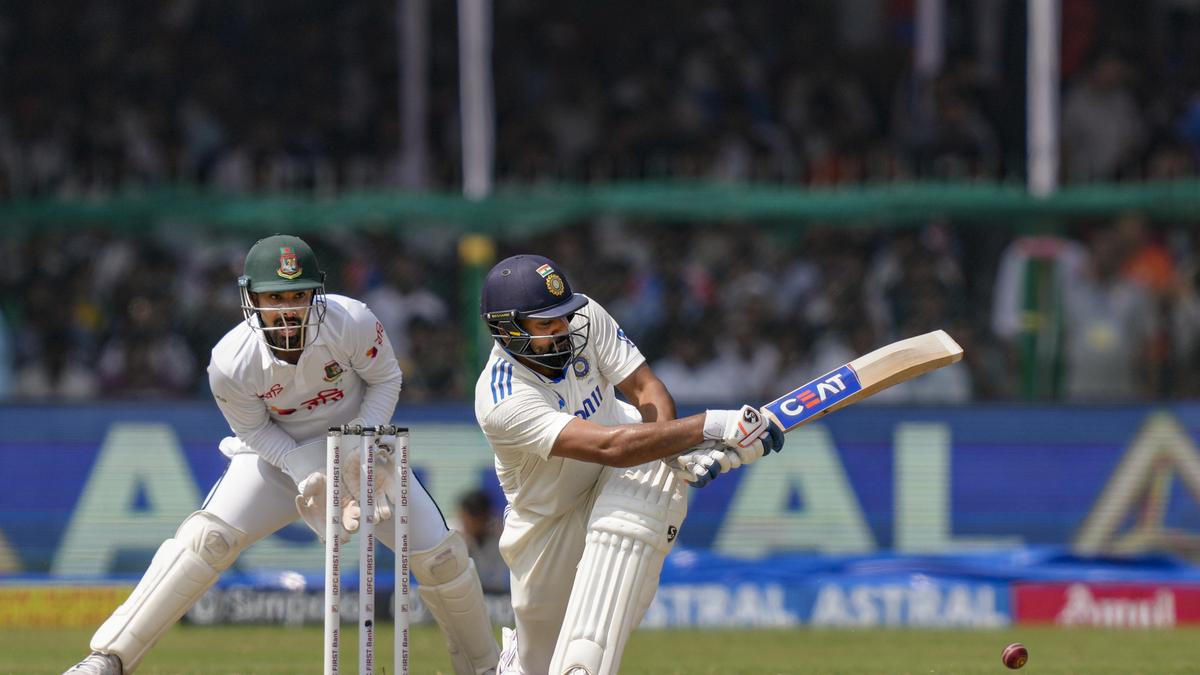 |
|
The recent Kanpur Test match witnessed India's batting prowess ignite a previously dormant contest, prompting widespread acclaim for their aggressive and innovative approach. At the helm of this revolutionary style is captain Rohit Sharma, who, since assuming leadership, has spearheaded a paradigm shift in India's batting philosophy. His own actions set the tone, exemplified by his first two deliveries in the first innings, which were launched for sixes, propelling the innings at a rapid pace. While young Yashasvi Jaiswal also contributed with boundary hits, Rohit's audacious approach, advancing down the pitch on the very first ball and smashing it over long-on, truly caught the eye. This aggressive intent threw the Bangladesh bowlers off balance, leaving them flustered and unsure of where to bowl.
This bold batting strategy, however, drew criticism from some quarters, particularly those who sought to claim ownership of it. The article criticizes the tendency to label everything with a 'this-gate' or 'that-ball' reference, mirroring the trend of attributing anything to the Watergate scandal. The author argues that while the batting was thrilling and refreshing, the term 'Bazball', coined for England's similar approach, was inappropriately applied. This criticism extends to attributing India's batting style to 'Bossball' (referring to Rohit) or 'Gamball' (referring to coach Gautam Gambhir). The author firmly asserts that Rohit, who has been batting in this aggressive manner for years, deserves sole credit, as Gambhir's coaching experience is too limited to warrant such attribution.
The article proposes a new term, 'Gohit', to describe India's batting approach, drawing from Rohit's name. This move is intended to break away from the tendency to label everything after existing trends and recognize the individuality of India's approach. This bold batting strategy, the author emphasizes, was not just a product of a particular coach or style, but a direct result of the ICC's World Test Championship. The pressure to earn points and qualify for the WTC finals has incentivized teams to prioritize wins and embrace innovation, leading to exciting and unpredictable matches. The author questions whether India would have adopted this aggressive style had the stakes been lower, suggesting that the WTC has indeed revitalized the Test format, making even seemingly inconsequential matches significant.
The article concludes with an anticipation of India's upcoming matches against New Zealand. The success of the 'Gohit' approach against Bangladesh fuels expectations of continued dominance, although the author acknowledges that New Zealand poses a tougher challenge. The impact of the 'Gohit' approach on the future of Test cricket remains to be seen, but it undoubtedly signifies a new era of aggressive and innovative batting, driven by Rohit Sharma's leadership and fueled by the World Test Championship's competitive landscape.
Source: Sunil Gavaskar: India’s inventive approach should be labelled ‘Gohit’ after skipper Rohit Sharma
